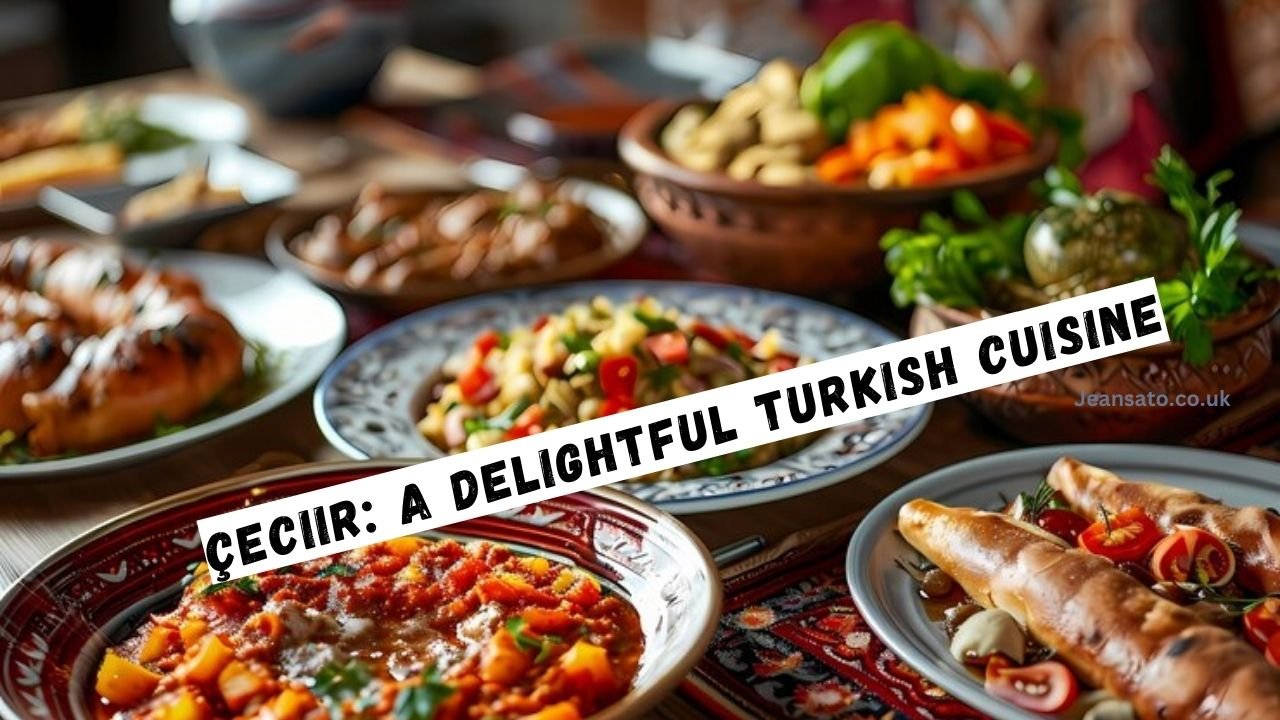With its complex flavors and many influences, Turkish food is among the most cherished culinary traditions worldwide. Among all of its pleasures, çeciir is a meal that perfectly captures Turkish cuisine. Together with answering some often-asked concerns about this culinary treasure, this page explores the background, components, cooking techniques, and cultural significance of çeciir.
What is Çeciir?
Turkish cuisine Çeciir is renowned for its unusual combination of tastes and textures. Cooked together to produce a filling and nourishing meal, it usually consists of grains, legumes, veggies, and aromatic spices. Many times eaten as a main dish, Çeciir is praised for its simplicity and healthful components.
Historical Background
Ceciir’s roots are in ancient Anatolian food when regular meals were made with regional products and straightforward cooking methods. Throughout the ages, çeciir has changed, absorbing flavors from many places and civilizations to represent Turkey’s rich culinary history. Still a mainstay in many Turkish homes, it represents coziness and custom.
Key Ingredients
The uses of fresh, regional products and their adaptability make çeciir beautiful. Even if recipes might differ, some typical components include:
Gur:
a sort of cracked wheat used as the foundation in many çeciir dishes. Chewy texture and nutty flavor are its well-known qualities.
Cereals:
Many times, for protein and bulk, lentils and chickpeas are used.
Fruits and vegetables:
The taste and nutritional value of the dish are improved with onions, tomatoes, peppers, and seasonal vegetables.
Spices and Botanicals:
Often added to give the meal depth and fragrance are cumin, paprika, mint, and parsley.
Extra Virgin Olive Oil:
A mainstay of Turkish cooking, it is used for cooking and, for extra richness, drizzled over the dish.
Preparation Method
The preparation of çeciir is straightforward, making it an accessible dish for home cooks. Here is a basic method:
- Sautéing: To start, soften and perfume finely sliced onions and garlic in olive oil.
- Including Greens: Chop up peppers, tomatoes, and any other vegetables you like. Cook just until they begin to soften.
- Incorporating Legumes: Stir into the vegetable mixture the precooked lentils or chickpeas.
- When Cooking Bulgur: To the pot add bulgur and enough water or broth to cover the contents. Sprinkle with paprika, cumin, salt, and any additional spices of choice.
- Warming up: Usually taking 20 to 25 minutes, cover and simmer the bulgur over low heat until it is cooked and has absorbed the liquid.
- Decorative Elements: Just before serving, stir in fresh herbs like mint or parsley. For more flavor, drizzle with more olive oil.
Cultural Significance
Çeciir represents Turkish hospitality and culinary heritage more than it does a meal. Because of the communal nature of Turkish culture, it is frequently offered during family get-togethers, festivals, and special events. The dish’s simplicity and use of healthful ingredients also emphasize how important sustainability and land respect are in Turkish cooking.
Frequently Asked Questions (FAQs)
Can çeciir be made with different grains?
You may try various grains like quinoa, rice, or couscous to suit your taste and dietary requirements, even though bulgur is the typical grain used in çeciir.
Does çeciir work for vegans and vegetarians?
Certainly is. Although Çeciir is by nature vegetarian, it is easily converted to vegan by using vegetable-based broth.
And what side dishes go well with çeciir?
Çeciir goes nicely with a range of side dishes including pickles, yogurt, fresh salads, and flatbreads like pita or lavash.
Conclusion
One evidence of the depth and variety of Turkish food is Ňeciir. Its traditional value and straightforward yet delicious ingredients make it a classic meal that cuts across generations. Whether you’re an experienced cook or brand-new to Turkish food, çeciir provides a delicious, healthful, and firmly traditional culinary experience.











